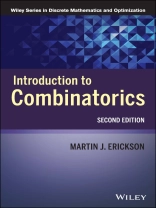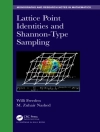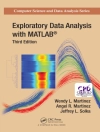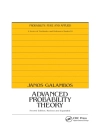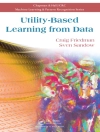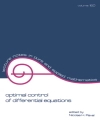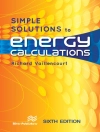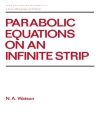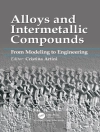Praise for the First Edition
'This excellent text should prove a useful accoutrement
for any developing mathematics program . . . it’s short,
it’s sweet, it’s beautifully written.’
–The Mathematical Intelligencer
'Erickson has prepared an exemplary work . . . strongly
recommended for inclusion in undergraduate-level library
collections.’ –Choice
Featuring a modern approach, Introduction to Combinatorics,
Second Edition illustrates the applicability of combinatorial
methods and discusses topics that are not typically addressed in
literature, such as Alcuin’s sequence, Rook paths, and
Leech’s lattice. The book also presents fundamental
results, discusses interconnection and problem-solving techniques,
and collects and disseminates open problems that raise questions
and observations.
Many important combinatorial methods are revisited and repeated
several times throughout the book in exercises, examples, theorems,
and proofs alike, allowing readers to build confidence and
reinforce their understanding of complex material. In addition, the
author successfully guides readers step-by-step through three major
achievements of combinatorics: Van der Waerden’s theorem on
arithmetic progressions, Pólya’s graph enumeration
formula, and Leech’s 24-dimensional lattice. Along with
updated tables and references that reflect recent advances in
various areas, such as error-correcting codes and combinatorial
designs, the Second Edition also features:
* Many new exercises to help readers understand and apply
combinatorial techniques and ideas
* A deeper, investigative study of combinatorics through
exercises requiring the use of computer programs
* Over fifty new examples, ranging in level from routine to
advanced, that illustrate important combinatorial concepts
* Basic principles and theories in combinatorics as well as new
and innovative results in the field
Introduction to Combinatorics, Second Edition is an ideal
textbook for a one- or two-semester sequence in combinatorics,
graph theory, and discrete mathematics at the upper-undergraduate
level. The book is also an excellent reference for anyone
interested in the various applications of elementary
combinatorics.
Spis treści
Preface xi
1 Basic Counting Methods 1
1.1 The multiplication principle 1
1.2 Permutations 4
1.3 Combinations 6
1.4 Binomial coefficient identities 10
1.5 Distributions 19
1.6 The principle of inclusion and exclusion 23
1.7 Fibonacci numbers 31
1.8 Linear recurrence relations 33
1.9 Special recurrence relations 41
1.10 Counting and number theory 45
Notes 50
2 Generating Functions 53
2.1 Rational generating functions 53
2.2 Special generating functions 63
2.3 Partition numbers 76
2.4 Labeled and unlabeled sets 80
2.5 Counting with symmetry 86
2.6 Cycle indexes 93
2.7 Pólya’s theorem 96
2.8 The number of graphs 98
2.9 Symmetries in domain and range 102
2.10 Asymmetric graphs 103
Notes 105
3 The Pigeonhole Principle 107
3.1 Simple examples 107
3.2 Lattice points, the Gitterpunktproblem, and SET®
110
3.3 Graphs 115
3.4 Colorings of the plane 118
3.5 Sequences and partial orders 119
3.6 Subsets 124
Notes 126
4 Ramsey Theory 131
4.1 Ramsey’s theorem 131
4.2 Generalizations of Ramsey’s theorem 135
4.3 Ramsey numbers, bounds, and asymptotics 139
4.4 The probabilistic method 143
4.5 Sums 145
4.6 Van der Waerden’s theorem 146
Notes 150
5 Codes 153
5.1 Binary codes 153
5.2 Perfect codes 156
5.3 Hamming codes 158
5.4 The Fano Configuration 162
Notes 168
6 Designs 171
6.1 t-designs 171
CONTENTS ix
6.2 Block designs 175
6.3 Projective planes 180
6.4 Latin squares 182
6.5 MOLS and OODs 185
6.6 Hadamard matrices 188
6.7 The Golay code and S(5, 8, 24) 194
6.8 Lattices and sphere packings 197
6.9 Leech’s lattice 199
Notes 201
A Web Resources 205
B Notation 207
Exercise Solutions 211
References 225
Index 227
O autorze
MARTIN J. ERICKSON, Ph D, is Professor in the Department
of Mathematics at Truman State University. The author of numerous
books, including Mathematics for the Liberal Arts (Wiley),
he is a member of the American Mathematical Society, Mathematical
Association of America, and American Association of University
Professors.
